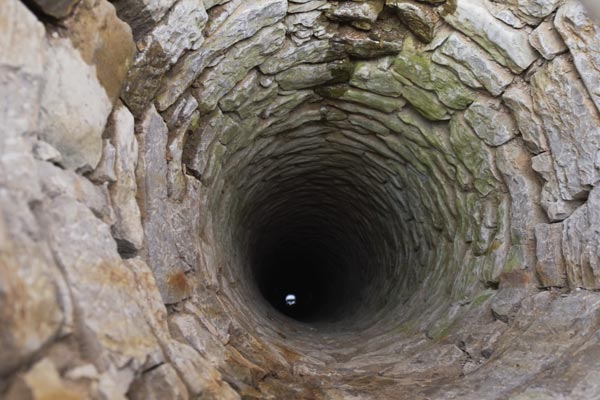Ancient wall holds Shandong in sway
By Zhao Ruixue ( China Daily ) Updated: 2014-03-20 07:29:28
 |
|
An old well made of stones is found in Fangyu village at the foot of the Qi wall.[Photo by Ju Chuanjiang/for China Daily] |
Materials used in the construction of the wall are different. For the parts in areas that have abundant stones, the wall is built by piling up stones without using any binding agent.
The wall located at Laiwu city, which is 40 km away from Jinan, is made of stones and on barren mountains. It remains remarkably well preserved largely due to its remoteness. This 64.16-km-long section is 6 meters high at its highest point and about 2 meters wide.
Except the gate and the 50-meter-long section of the wall restored by the local government, the other part of the Laiwu section is original, allowing details of its engineering to be appreciated.
At the plain and valley areas, the wall is built with rammed earth like the eastern part of the wall.
"The wall must have required a great amount of labor to construct as most of the sediment for the wall had to be carried uphill to mountainous areas," Feinman says.
"Our archaeological settlement pattern studies indicate that the eastern section of the wall may have been built across what was a frontier zone (between the Shandong Peninsula and the coastal basin to the south) that was sparsely settled for about 1,000 years before the wall was built. After China was unified by Qin Shihuang, the area around the wall became more densely occupied by villages," Feinman says.
At the section in Changqing district in Jinan, Liu Bin, head of the cultural heritage office of Changqing district, says the wall was once 7 meters high, but now it is only 2 meters high. "Farmers take stones from the wall to build houses and banks of their farmland," Liu says. "Some sections of the wall have been removed to make room for roads."
Xie Zhixiu, head of the Shandong cultural heritage bureau, says that the Qi wall is deteriorating from natural erosion, construction, mining and land reclamation.
China approved a plan to preserve key sections of the Qi wall last year. Developed by the local authorities and approved by the central government, the plan gives priority to the preservation of 10 key sections and heritage sites.
"On the base of preservation, we will open some parts of the Qi wall to visitors and turn them into popular tourist sites like Badaling in Beijing," Xie says.
|
|
|
|
|
|
|
|
























 Raymond Zhou:
Raymond Zhou: Pauline D Loh:
Pauline D Loh: Hot Pot
Hot Pot Eco China
Eco China China Dream
China Dream China Face
China Face





